[ANSWERED] What is a dunning notice?
Today we are going to focus on one of the most common of the previously listed: lack of communication. It’s likely there is no malicious intent behind a patient’s outstanding balance. If it isn’t simply due to a financial problem, you’re likely looking at a communication issue.

In 2022, The KFF Health Care Debt Survey found that 41% of adults have some form of medical debt.
There are many reasons why a patient might have a delinquent account with their provider. Saying someone has a “delinquent account” is another way of saying that there is money owed between a client and a business.
You can usually find this information in the Accounts Receivable (AR) portion of a business’s revenue cycle.
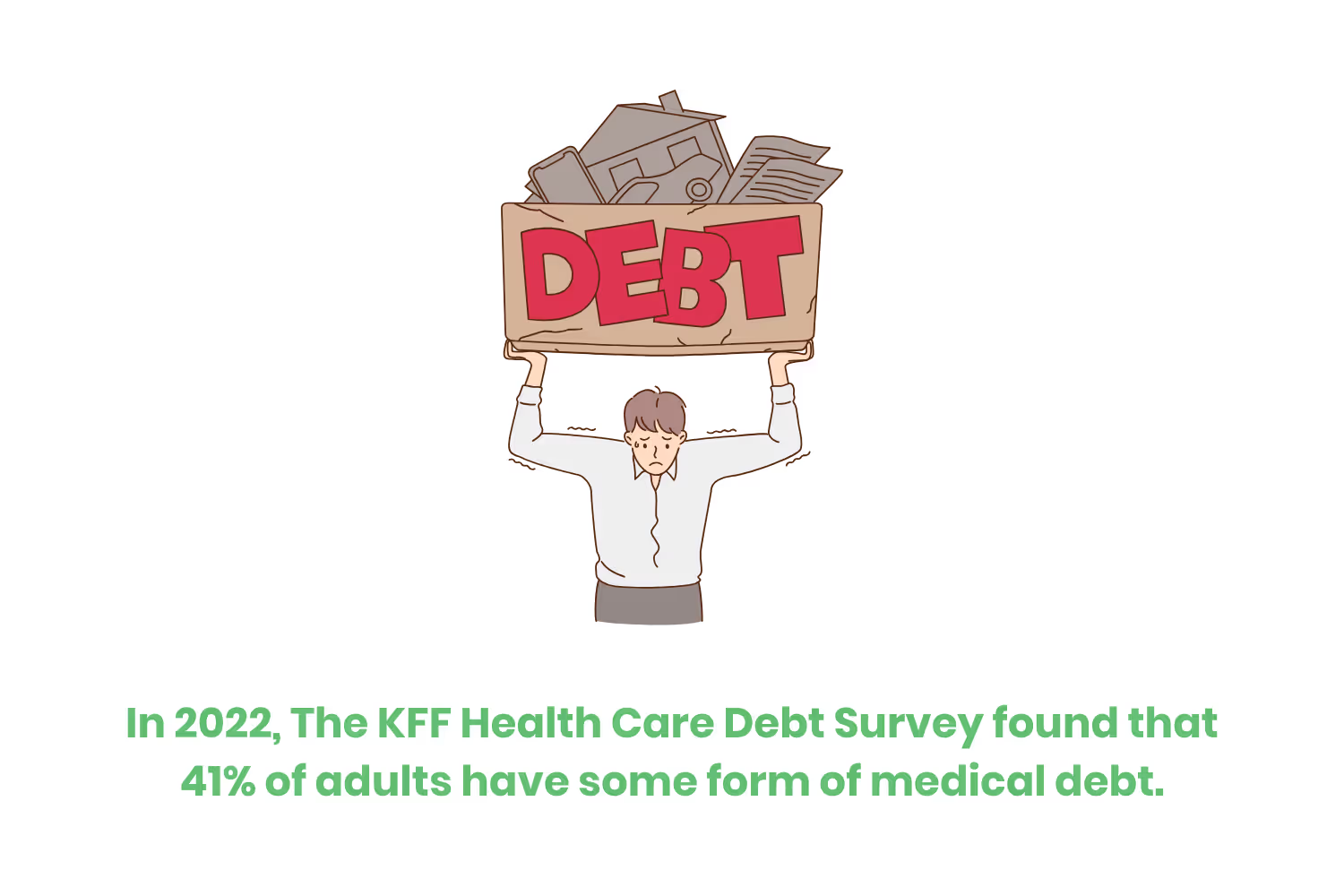
Some reasons you may be waiting on a patient’s late payment are:
- Administrative errors. Internal miscommunication between your team about invoices can lead to slowed payments. Inefficient billing processes can lead to missing or misrouted invoices.
- Financial issues. Patients may be facing their financial issues. Which in turn could affect them being able to pay you on time.
- Communication issues. Invoices that are unclear with payment instructions can cause confusion among patients. Miscommunication and lack of follow-up can both seriously hinder your revenue cycle process.
- Delay in postage. Unexpected mail delivery delays can impact your bottom line as well. This is usually outside of your control.
- Lack of payment options. If your accepted payment options do not align with your patients’ means of paying, you are likely to hit a bump in the road when it comes to collecting revenue.
Today we are going to focus on one of the most common of the previously listed: lack of communication. It’s likely there is no malicious intent behind a patient’s outstanding balance. If it isn’t simply due to a financial problem, you’re likely looking at a communication issue.
There are plenty of ways to remedy this situation, but one of the easiest is through sending a dunning notice. So today I am going to walk you through what a dunning notice is when you should send one, and what the process entails together.
What is a Dunning Notice?
If you have ever had an overdue payment before, chances are that you have already seen a dunning notice. A dunning notice, sometimes called a “dunning letter”, is a form of communication businesses send their clients who hold overdue balances. This is in hopes that the notice prompts them to pay the said balance. It’s a subtle “nudge” in the business world as opposed to jumping straight to a direct phone call.
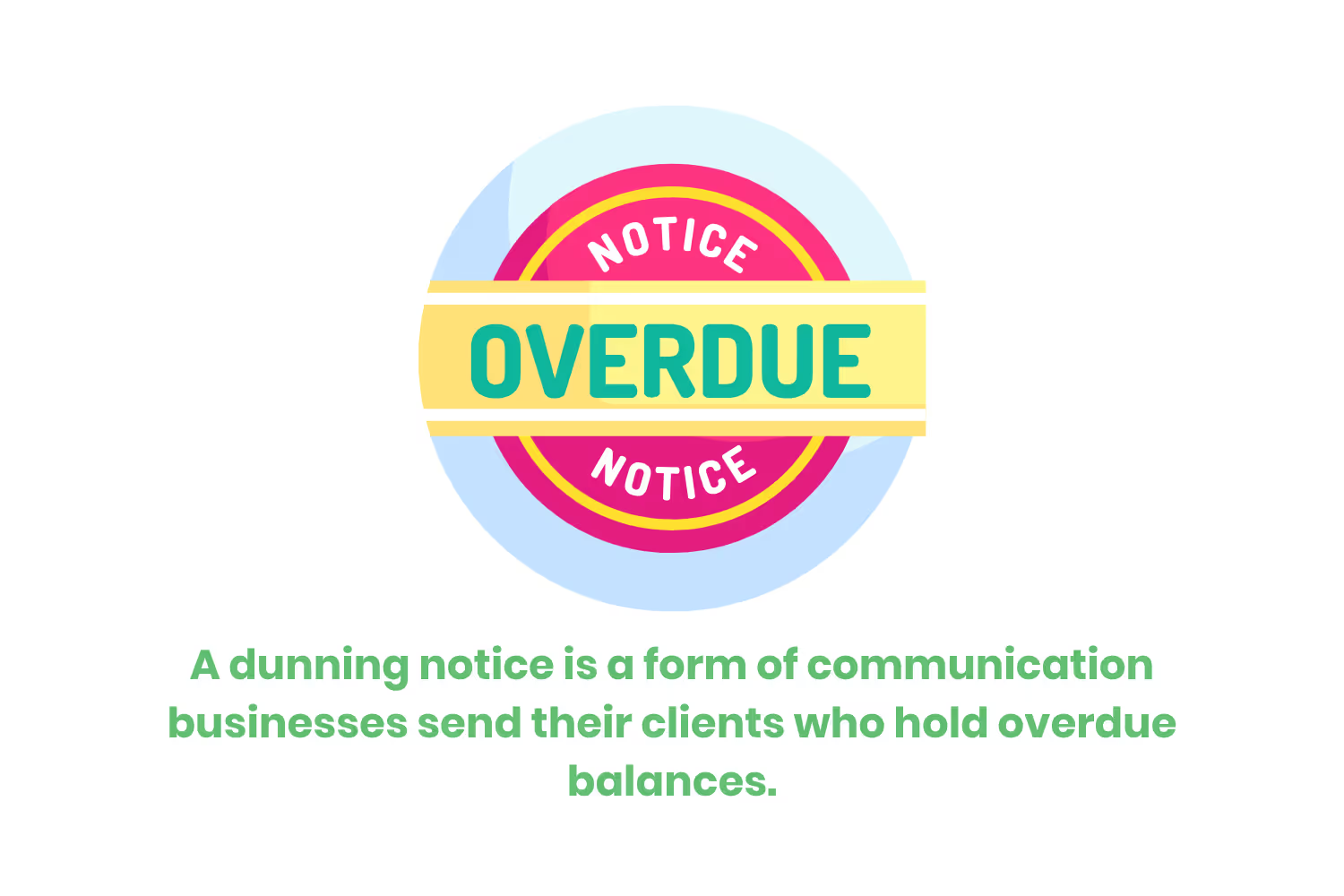
Just as any business, healthcare companies and providers need to collect their balances, too! So if you work in medical billing, you are likely also familiar with these kinds of letters. Without a dunning process in place, your collection team will likely struggle to collect on overdue balances.
So let’s say you don’t have one in place. Don’t panic! That’s why you are here, right? Let’s get into what your process should look like and how incorporating a dunning notice into your AR process can help you maintain your bottom line.
The Dunning Process
Originally, dunning notices traditionally went out in the mail via the United States Postal Service. Now, many patients prefer digital invoices. So you can now send notices through email as a PDF attachment. Some companies choose to include the dunning notice space in the body of the email message itself.
Your dunning process will differ slightly depending on the tools you use, your customer interaction approaches, and your team’s collection preferences. But here are the basic steps most billing teams use to avoid complications.
Identify Overdue Accounts
First, identify any overdue accounts. Flagging accounts with overdue balances and outstanding totals involves regularly reviewing patient records and aging reports. You should have a process to be periodically looking over your financial statements to determine which accounts need follow-up on. If you don’t, consider making this a priority from now on.
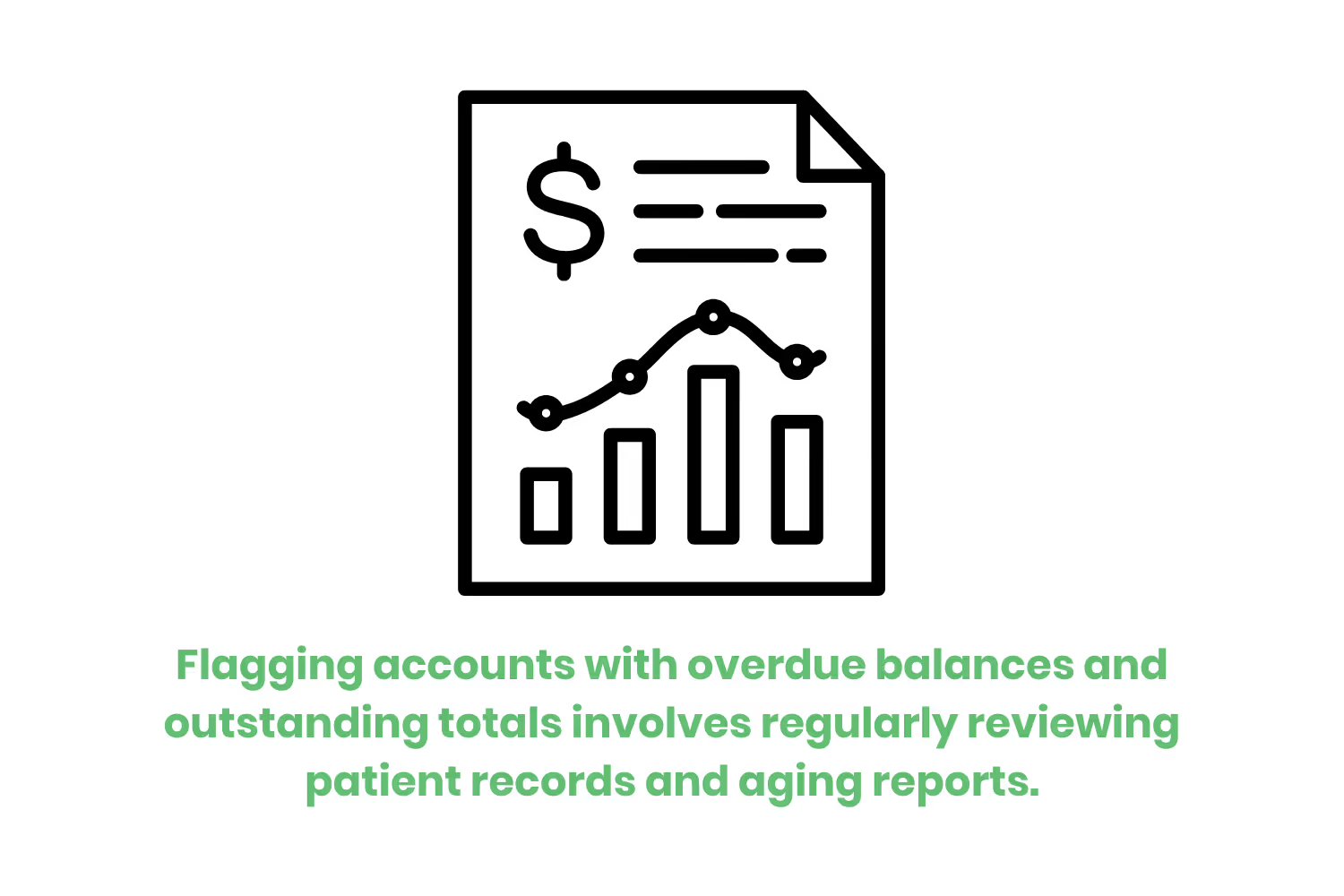
List the Overdue Accounts
Create a list of your delinquent accounts. Once you identify these accounts, organize them further by criteria such as balance size, payment history, and length of delinquency. Making sure you correctly prioritize this list will help you get to high-risk accounts that need your attention sooner.
Draft Dunning Notice
Draft your dunning notice verbiage ahead of time. Having clear and professional payment reminders in your notice is key. Make sure to be thorough with your client when explaining the next steps. Include the outstanding amount, due date, payment instructions, and end your message in a pleasant tone. This helps you keep a positive customer relationship while prompting patients to quickly resolve their bills.
Send the Dunning Notice
Now it’s time to send your dunning notice and any correlating payment notices. Typically, you will send these at scheduled intervals after the due date passes: 1 net day, 30 net days, 60 net days, 90 net days, and 120 net days. These messages will start as a gentle reminder, but as time goes on, they should become firmer in tone if the payment continues to be outstanding. Again, there are many different ways you can send these notices. You can deliver them via email, postal mail, or even automated AR systems.
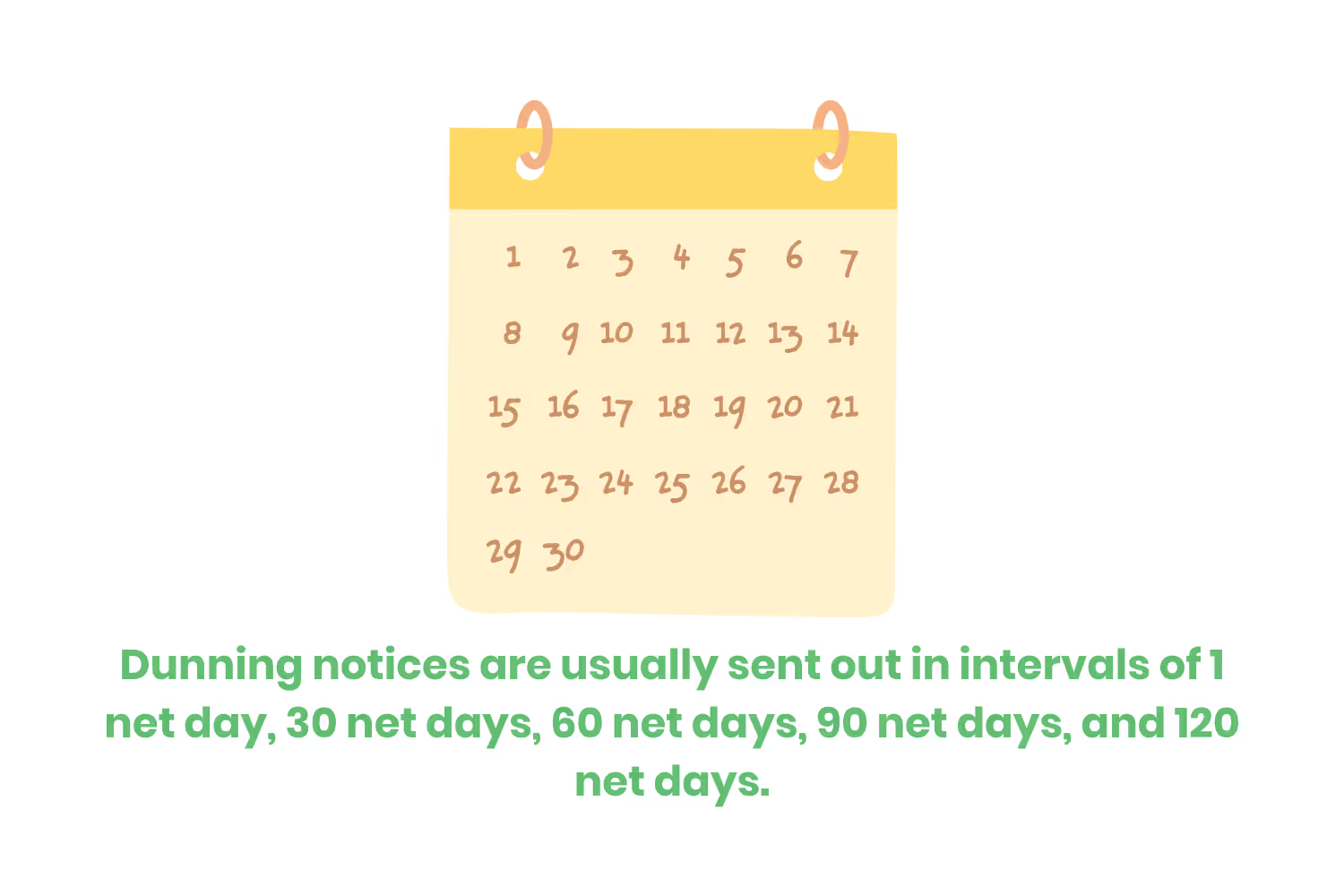
Follow Up
Finally, don’t forget to follow up. You can do this by sending follow-ups via phone calls, emails, or even text messages depending on the patient’s preferences. This can be helpful, especially if a patient needs to sign up for a payment plan to make their payments. Record all payments you receive and apply them to the correct accounts. If a patient continues to miss payments, you may want to consider escalating the account to a collections agency. In this case, make sure you have proper documentation that you have been trying to reach this person through dunning attempts.
Track Dunning Notices
The best way to see if your dunning notice process is effective or not is by tracking metrics like response rates from patients. Other metrics to look out for are payment recovery rates, days sales outstanding (DSO), customer satisfaction scores, etc. These key point indicators show the functionality of your process. Collecting data throughout your AR process helps keep you on top of your financial health.

If you have higher volumes of past-due payments, rising numbers of delinquent accounts, or lower dunning notice response rates, you may need to rethink your processes. Consider investing in a Revenue Cycle Management (RCM) system to help automate your company’s dunning process and easily keep track of key performance indicators.
Tips to Improve Your Dunning Process
By investing in an RCM system, you are setting yourself up for future success. This is by far the best tip we have when it comes to improving your dunning process. Digitalization and automation of your accounts receivable operations make the process easier for both you and your customers. From being able to offer multiple payment methods through a cloud-based portal to the personalization of dunning notices. Automation keeps your revenue cycle flowing smoothly and efficiently.
Conclusion
Implementing strong dunning notification processes can help your company maintain a healthy financial bottom line. Investing in AR automation through an RCM system helps you not only to send out dunning messages on time but also helps streamline your billing team’s internal operations. By identifying overdue and delinquent payments, sending well-crafted notices, and following up with your patients promptly, you can improve your payment recovery rates. All while keeping a positive relationship with your patients.
Emphasize your product's unique features or benefits to differentiate it from competitors
In nec dictum adipiscing pharetra enim etiam scelerisque dolor purus ipsum egestas cursus vulputate arcu egestas ut eu sed mollis consectetur mattis pharetra curabitur et maecenas in mattis fames consectetur ipsum quis risus mauris aliquam ornare nisl purus at ipsum nulla accumsan consectetur vestibulum suspendisse aliquam condimentum scelerisque lacinia pellentesque vestibulum condimentum turpis ligula pharetra dictum sapien facilisis sapien at sagittis et cursus congue.
- Pharetra curabitur et maecenas in mattis fames consectetur ipsum quis risus.
- Justo urna nisi auctor consequat consectetur dolor lectus blandit.
- Eget egestas volutpat lacinia vestibulum vitae mattis hendrerit.
- Ornare elit odio tellus orci bibendum dictum id sem congue enim amet diam.
Incorporate statistics or specific numbers to highlight the effectiveness or popularity of your offering
Convallis pellentesque ullamcorper sapien sed tristique fermentum proin amet quam tincidunt feugiat vitae neque quisque odio ut pellentesque ac mauris eget lectus. Pretium arcu turpis lacus sapien sit at eu sapien duis magna nunc nibh nam non ut nibh ultrices ultrices elementum egestas enim nisl sed cursus pellentesque sit dignissim enim euismod sit et convallis sed pelis viverra quam at nisl sit pharetra enim nisl nec vestibulum posuere in volutpat sed blandit neque risus.
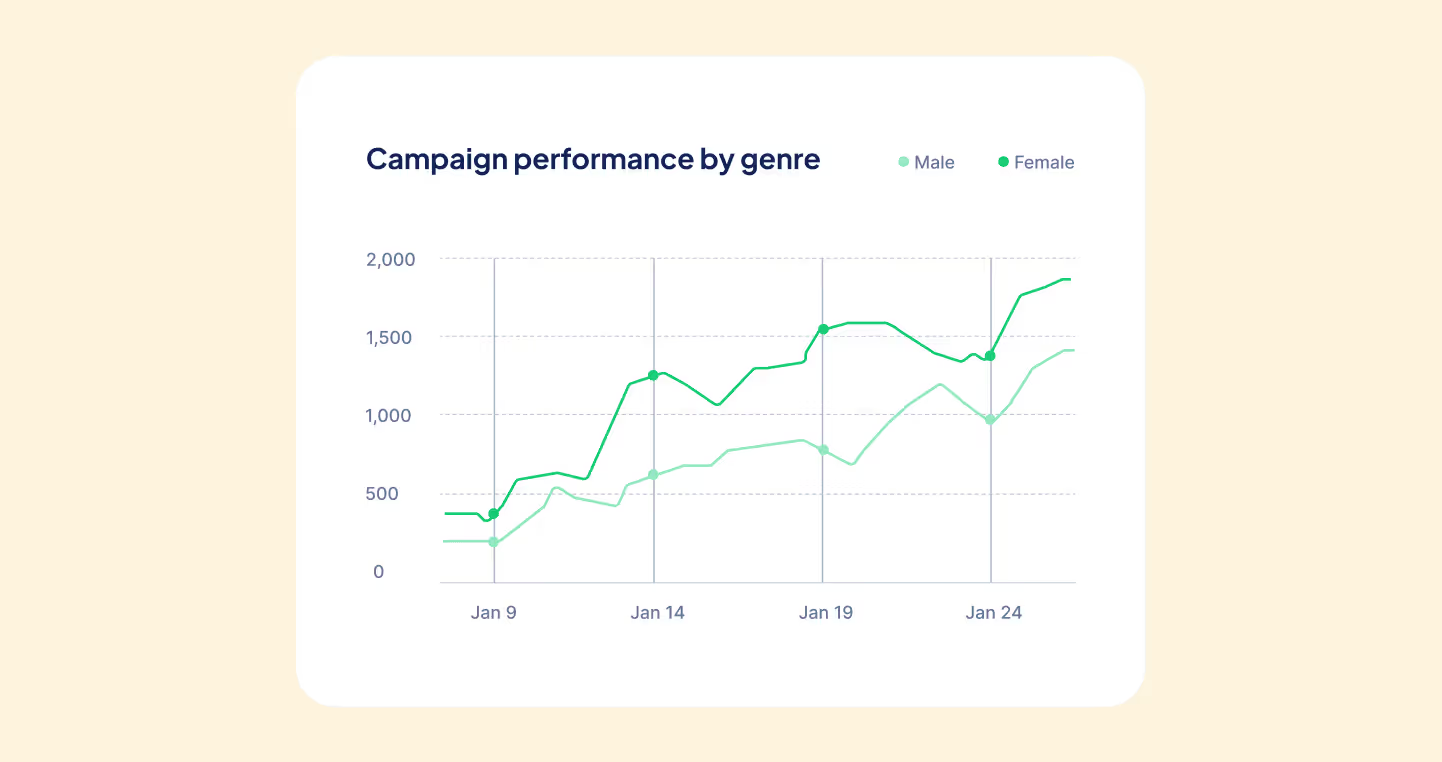
Use time-sensitive language to encourage immediate action, such as "Limited Time Offer
Feugiat vitae neque quisque odio ut pellentesque ac mauris eget lectus. Pretium arcu turpis lacus sapien sit at eu sapien duis magna nunc nibh nam non ut nibh ultrices ultrices elementum egestas enim nisl sed cursus pellentesque sit dignissim enim euismod sit et convallis sed pelis viverra quam at nisl sit pharetra enim nisl nec vestibulum posuere in volutpat sed blandit neque risus.
- Pharetra curabitur et maecenas in mattis fames consectetur ipsum quis risus.
- Justo urna nisi auctor consequat consectetur dolor lectus blandit.
- Eget egestas volutpat lacinia vestibulum vitae mattis hendrerit.
- Ornare elit odio tellus orci bibendum dictum id sem congue enim amet diam.
Address customer pain points directly by showing how your product solves their problems
Feugiat vitae neque quisque odio ut pellentesque ac mauris eget lectus. Pretium arcu turpis lacus sapien sit at eu sapien duis magna nunc nibh nam non ut nibh ultrices ultrices elementum egestas enim nisl sed cursus pellentesque sit dignissim enim euismod sit et convallis sed pelis viverra quam at nisl sit pharetra enim nisl nec vestibulum posuere in volutpat sed blandit neque risus.
Vel etiam vel amet aenean eget in habitasse nunc duis tellus sem turpis risus aliquam ac volutpat tellus eu faucibus ullamcorper.
Tailor titles to your ideal customer segment using phrases like "Designed for Busy Professionals
Sed pretium id nibh id sit felis vitae volutpat volutpat adipiscing at sodales neque lectus mi phasellus commodo at elit suspendisse ornare faucibus lectus purus viverra in nec aliquet commodo et sed sed nisi tempor mi pellentesque arcu viverra pretium duis enim vulputate dignissim etiam ultrices vitae neque urna proin nibh diam turpis augue lacus.



![[ANSWERED] What is a Long-Term Care (LTC) Pharmacy](https://cdn.prod.website-files.com/67e2b8210878abcba6f91ae6/68d687806a075a1cf64659b0_WhatisLongTermCarePharmacy_925.avif)
